|
XI'AN (Day 11 - part 1)
In the morning, a tour bus took us to see one of the most famous sites in the country, the terracotta warriors.
The first emperor of China, Qin Shi Huang (221 - 206 BC), believed (as many did at that time) that things could be taken with him into the afterlife. This is why, for example, favorite concubines were often killed and buried with their lords. In this case, the emperor wished to take an entire army with him.... although fortunately not a living (well, dead) one. But MANY people were still killed.
The warriors were made around 210 BC from local clay and placed in an underground building with long hallways. Not long after the emperor's death, there was an uprising of farmers. They broke their way into the warrior building, looted the weapons, and set the entire place on fire. It took three months for the palace to burn down to ashes. The wooden beams that served as a roof burned and dirt caved in, damaging and burying the warriors until they were discovered by a local farmer digging a well in 1974.
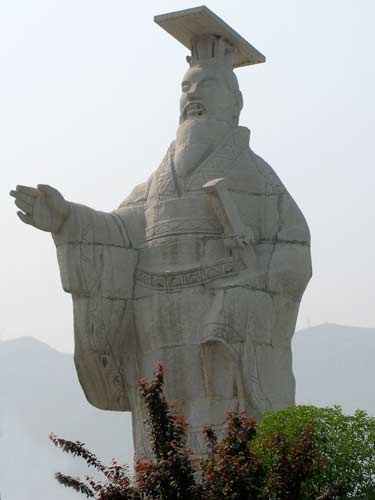
Qin Shi Huang was the same emperor who built the Great Wall.
700,000 forced laborers were sacrificed to construct his tomb which was begun as soon as he ascended the throne at the age of 13. It took 11 years to finish. All workers and childless concubines were interred with him to safeguard its secrets. Many of the bodies were folded in half to fit in three-foot coffins.
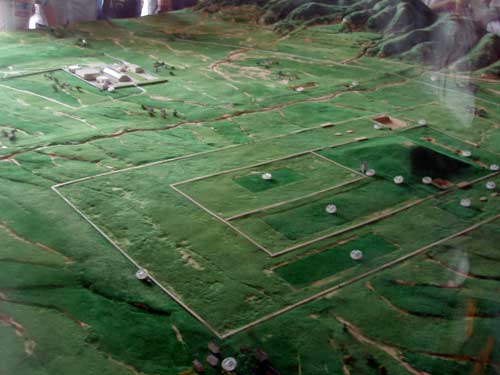
Map of the terracotta warrior site and the emperor's mound one mile away. The mound used to be twice as tall.
The main tomb has still to be excavated - partly because archaeologists are still uncertain of its exact location. Often emperors amassed huge burial mounds simply to divert robbers' attention from the true site of their tomb. So the artificial mound that today marks the Emperor's tomb does not necessarily indicate the location of its wondrous central chamber. The terracotta warriors form just one of the many barriers the emperor employed to protect his tomb for eternity.

A map of the grounds
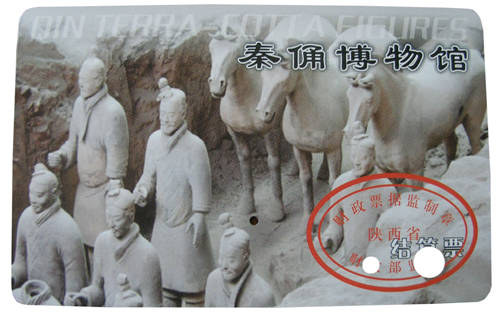
The entry ticket
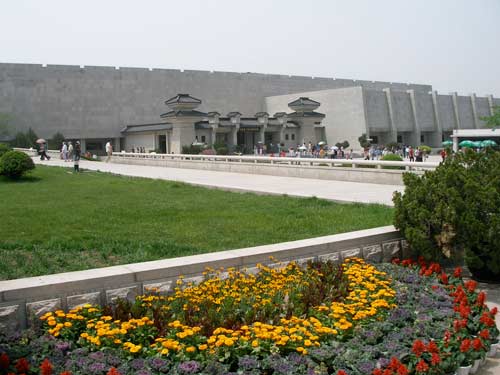
The museum hall
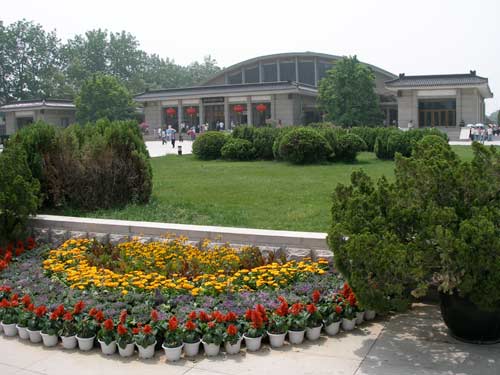
The building that protects Pit #1
Pit #1 is the largest, containing 6,000 warriors and horses, of which 1,000 have been fully unearthed. It was opened in 1979. The pits are named in the order of their discoveries.
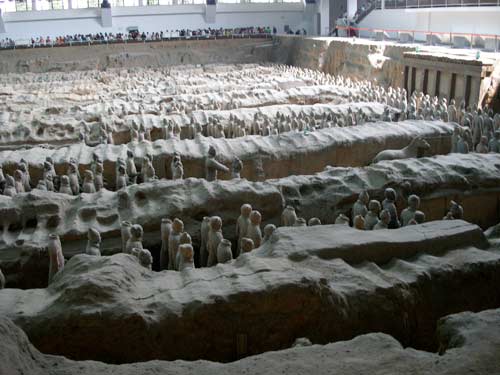
The soldiers fill the long hallways that were once covered with a wooden roof. The walls were fortified with wooden columns, earth and reeds while the floor was covered with black bricks.
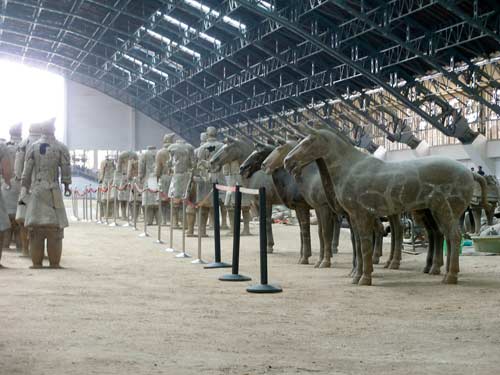
In order to protect the find, a large arched hall with a steel frame was built above the pit in 1976. Covering an area of 170,000 square feet, the hall has temperature and humidity monitoring systems.
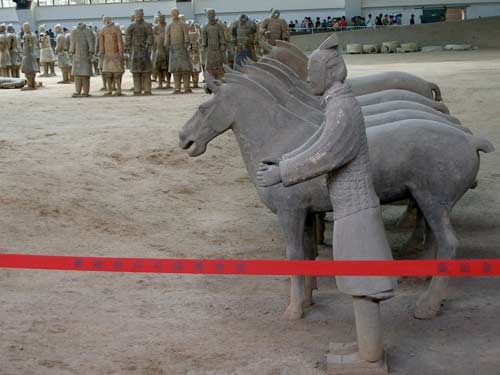
Thousands of individual human and animal statues were manufactured. By constructing a hollow statue upon solid legs, the ancient Chinese craftsmen solved the perplexing problem of how to make a statue free-standing. Hollow heads, arms and legs, made of coiled earth, were joined together with strips of clay and set upon the legs. After this rough model was assembled, a fine clay slip was added, and details such as eyes, mouth, nose and details of dress were carved into the clay while it was still pliable. Additional pieces such as ears, beard and armour were modeled separately and attached, after which the whole figure was fired at a high temperature.
During the excavation and repair work on the figures, experts discovered many names carved or printed on the bodies, hidden in such places as the hips or under the arms. So far 87 different names have been recognized. Research has shown these people to be the master craftsmen, each with many assistants. All in all, it is estimated that about 1,000 people participated in the making of the warriors, probably recruited from all over the country.
Unfortunately, even though the technical skills of all the artisans were excellent and their contribution to the emperor was incalculable, their fates were sealed. After the death of the emperor, they were buried alive in the tomb passages so that the secret of the mausoleum would not be revealed.
The army is arranged into a well-organized battle array composed of the infantry and cavalry. The vanguard includes 210 foot soldiers divided equally into three lines. The cavalry and war chariot follow close in line, forming the main body of the battle formation. The foot soldiers are alternated with the chariots drawn by horses, lined into 38 columns. On both the northern and southern sides of the war formation stand 180 warriors who serve as flank guards. The rear guards are on the western end, with two lines facing east and another facing west. Some soldiers wear battle robes, while others are equipped with armor.
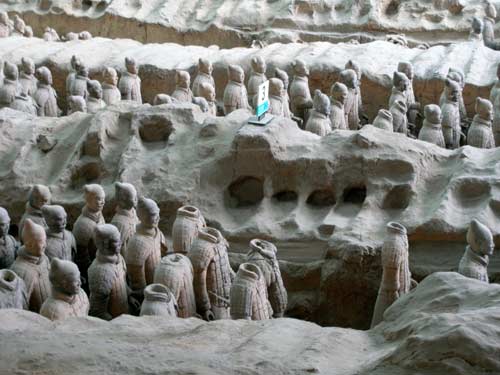
In many spots, the walls are lower than the warriors. This is due to a flood which caused the walls to partially collapse.
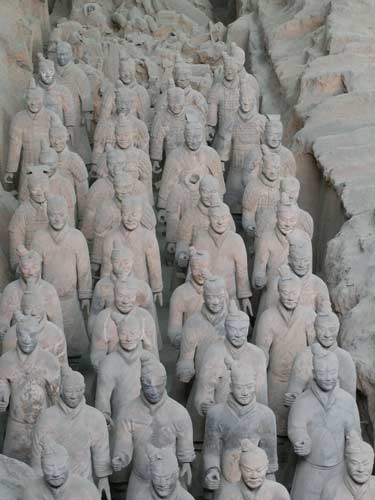
Hands still attempt to hold the bronze weapons that were looted by the farmers.
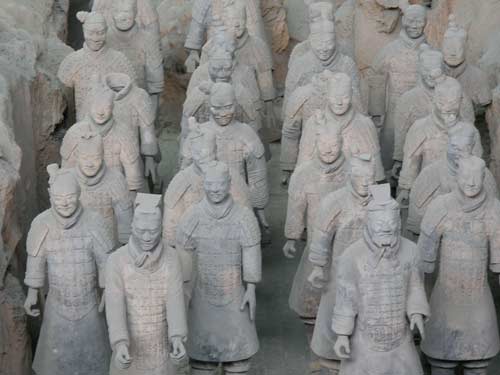
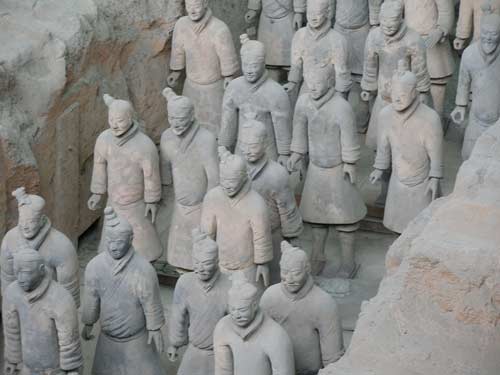
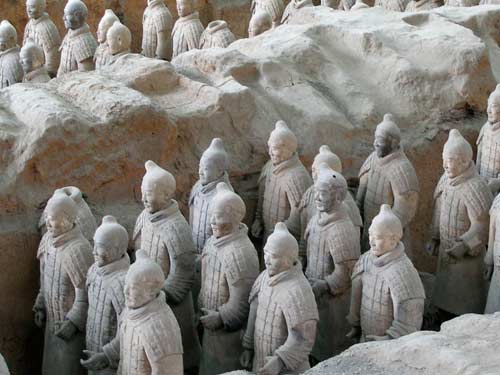

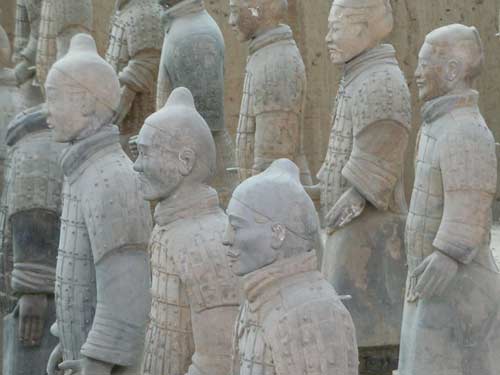

Note all the different expressions
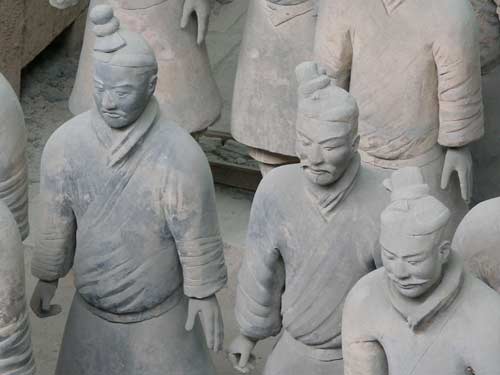
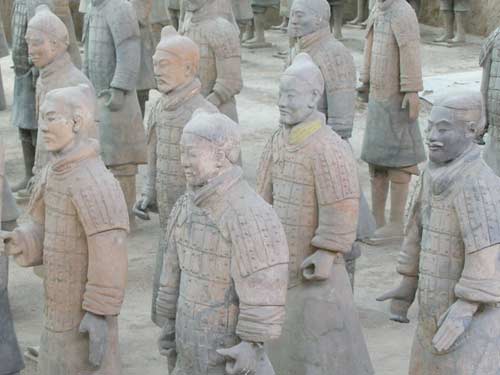
The warriors used to be very colorful, and some traces still remain. Their glaze was only fired once, so it was not very durable.
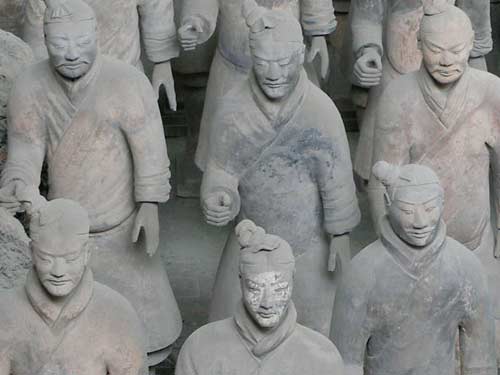
30 different colors were used, all made from rocks and plants.
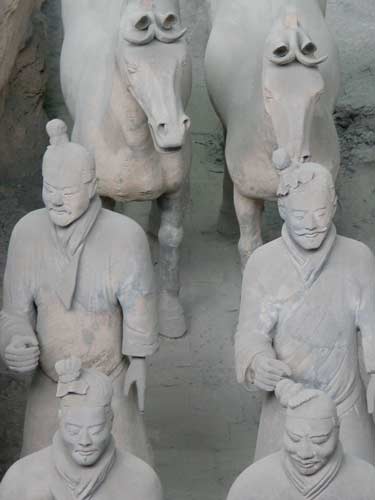
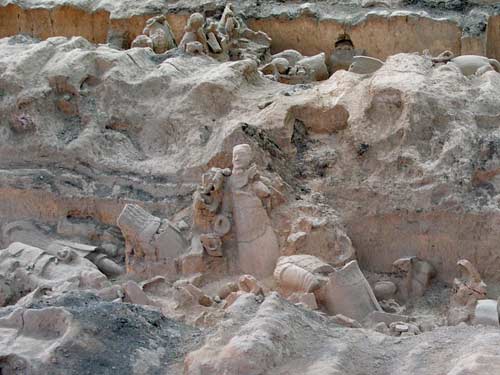
Work is still being done to uncover and reassemble more statues.
We then made a quick stop in the gift shop. Unfortunately the full-scale models were a bit out of my price range... but fortunately a set of five small figures could be purchased from the local street vendors for $3 (after haggling).
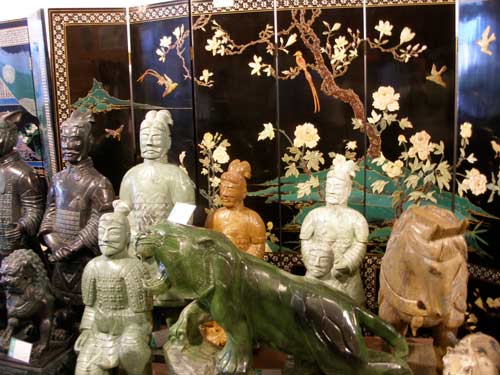
An array of warriors carved out of all types of materials were available for purchase.
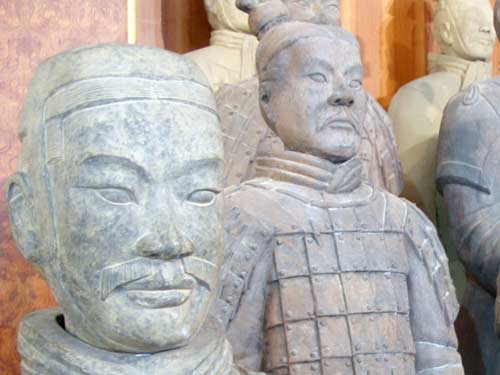
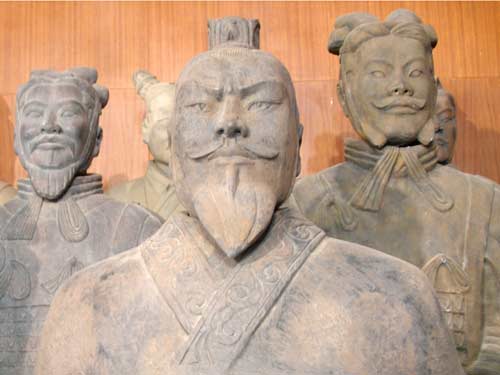
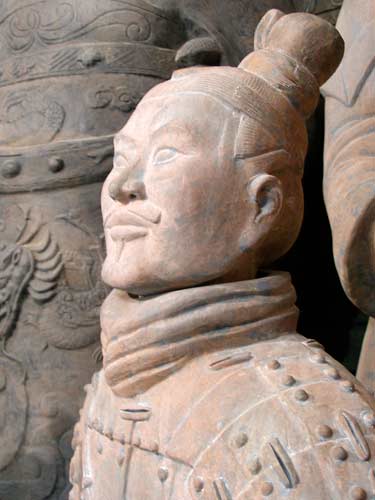
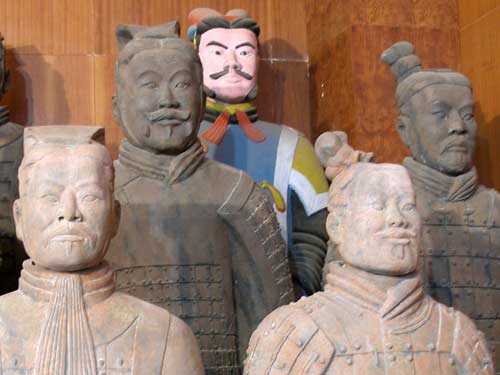
This display shows how the warriors used to be colored.
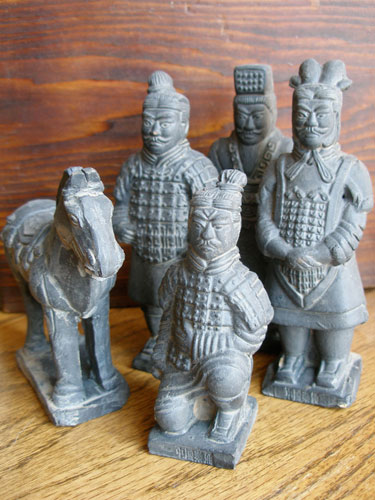
My $3 set from the local street vendor
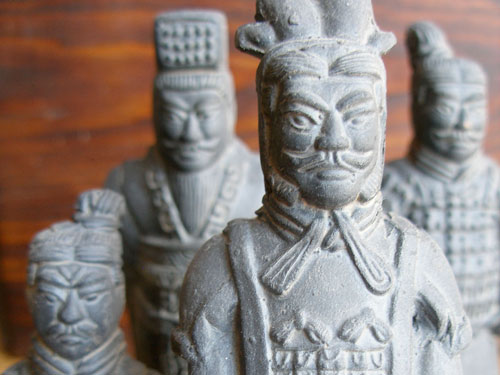
From left to right: an archer, the emperor, an officer and a foot soldier
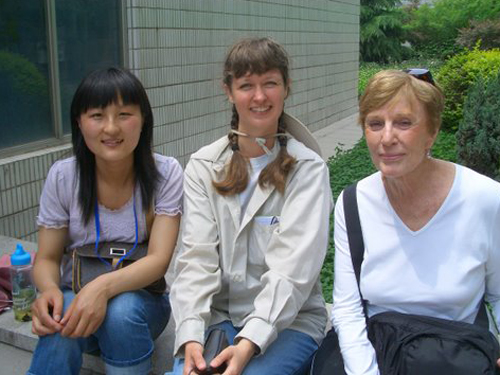
Chatting with a Chinese tourist who spoke excellent German.
Pit #2 was found in 1976. It contained over 1,000 warriors and 90 chariots of wood. It was unveiled to the public in 1994. The building also contained an exhibition area.
Compared to Pit #1, the combat formations found here are more complex, and the units of armed forces are more complete. According to preliminary calculations, there are over 80 war chariots, about 1,300 warriors and horses, and thousands of bronze weapons.
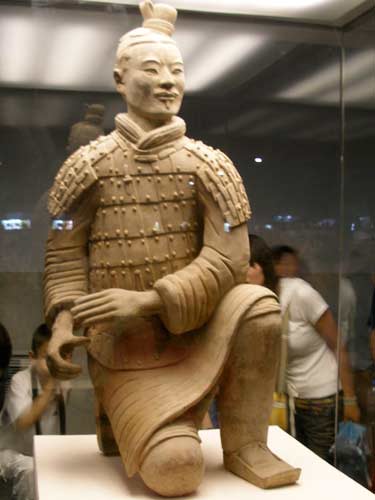
An archer found in the pit
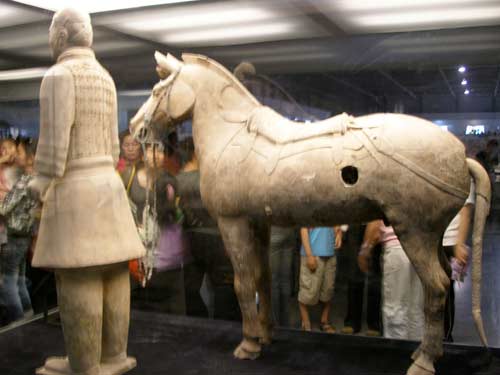
A calvary man. The hole in the side of the horse was to keep it from exploding while being fired. The saddle does not have any stirrups.

An officer
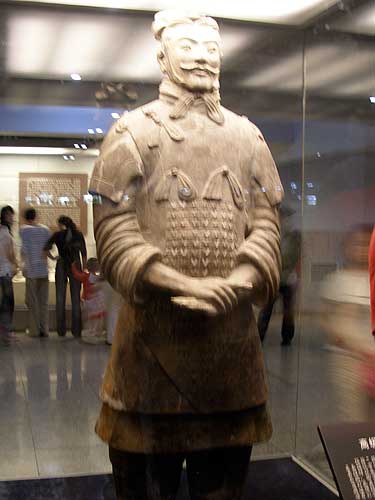
A general, as identified by his outfit and the fact that he is obviously well-fed. There is no statue of the emperor. Perhaps it is located in the tomb.
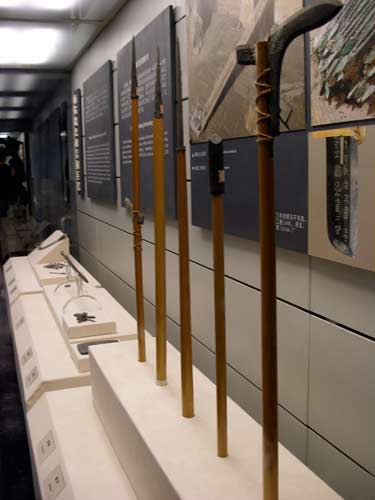
Some of the original bronze weapons
Pit #3 is the smallest. It was also discovered in 1976. It appears to be the command center for all the groups in the other two pits. It went on display in 1989, with 68 high-ranking officers, a war chariot and four horses.
Because the contents of this pit were not burned, the warriors unearthed here are more splendid than those found in the other two pits.
|
|

